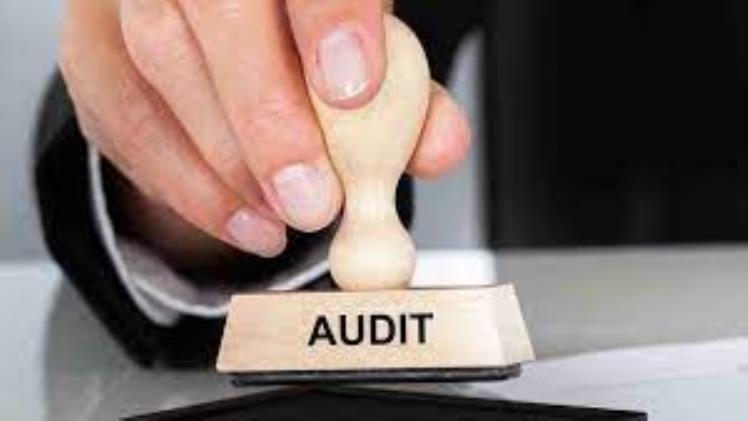Demystifying the Audit and Assurance Process: A Comprehensive Guide

Introduction
In the realm of business and finance, the audit and assurance process serves as a cornerstone of trust and transparency. This intricate process involves a meticulous examination of an organization’s financial statements, operational procedures, and adherence to regulatory standards. It is a vital practice that offers assurance to stakeholders, such as investors, lenders, and the general public, that an entity’s financial information is reliable. In this comprehensive guide, we will delve into the audit and assurance process, unpacking its stages, key components, and the significance it holds in today’s complex business environment.
Understanding the Audit and Assurance Process
1. Initial Planning and Risk Assessment
The audit and assurance journey commences with a well-thought-out plan. During this phase, audit firms in sharjah collaborate with the organization to gain an understanding of its operations, industry, and historical financial performance. This initial planning stage is instrumental in identifying potential risks and challenges that may influence the audit process.
Auditors consider the scope of their work, the audit objectives, and the overall timeline. A detailed audit plan is then developed to guide the audit team throughout the engagement. This strategic planning sets the foundation for a successful audit.
2. Gathering Evidence
With the audit plan in place, auditors embark on the process of gathering evidence. This phase involves collecting a wide array of documents, records, and financial statements that substantiate the organization’s financial performance. Key documents may include:
– Financial statements, including the balance sheet, income statement, and cash flow statement.
– Accounting records, such as general ledgers, journals, and subsidiary ledgers.
– Invoices, receipts, and supporting documentation for transactions.
– Bank statements and reconciliations.
– Contracts, agreements, and legal documents.
– Internal policies and procedures.
audit firms in sharjah meticulously examine these documents to ensure they are accurate, complete, and in compliance with relevant accounting standards and regulations.
3. Testing Internal Controls
A crucial aspect of the audit process involves evaluating the internal controls that an organization has in place. Internal controls are policies, procedures, and practices designed to safeguard assets, prevent fraud, and ensure the accuracy of financial information. Auditors assess the effectiveness of these controls to identify any weaknesses or vulnerabilities that could lead to errors or fraudulent activities.
During this phase, auditors may conduct tests of controls to verify that these procedures are operating as intended. They evaluate the design and implementation of internal controls to determine their overall effectiveness.
4. Substantive Testing
Substantive testing forms the heart of the audit process. It involves a detailed examination of individual financial transactions, account balances, and supporting documentation. Auditors select a sample of transactions and perform substantive procedures to verify the accuracy and completeness of financial statements.
This phase includes a variety of audit procedures, such as:
– Analytical procedures: Comparing financial data to industry benchmarks and historical trends.
– Confirmation: Receiving direct confirmation from third parties, such as banks or customers, regarding balances and transactions.
– Reconciliation: Ensuring that account balances reconcile with supporting documentation and records.
– Vouching: Tracing transactions back to source documents to confirm their authenticity.
– Reviewing documentation: Examining contracts, invoices, and agreements to validate their accuracy and completeness.
5. Audit Sampling
Given the vast volume of transactions and items within an organization, it is often impractical to review each one individually. Auditors utilize statistical sampling techniques to select representative samples for testing. These samples are carefully chosen to provide a reasonable basis for drawing conclusions about the entire population of transactions or items.
Audit sampling allows auditors to efficiently assess the accuracy and reliability of financial information while maintaining a manageable workload.
6. Risk Assessment and Materiality
Risk assessment is an integral component of the audit process. Auditors evaluate the risk of material misstatement in the financial statements, taking into account factors such as the size and complexity of the organization, industry-specific risks, and historical error rates.
Materiality thresholds are established to determine whether a misstatement is significant enough to impact the decision-making of users of the financial statements. Auditors aim to ensure that any material misstatements are identified and corrected during the audit process.
7. Evaluation of Going Concern
Auditors assess whether the organization has the ability to continue its operations as a going concern for the foreseeable future, typically within the next 12 months. This evaluation involves considering factors such as financial stability, liquidity, and future cash flow projections.
If audit firms in sharjah have concerns about the organization’s ability to continue as a going concern, they are required to include this information in their audit report. This disclosure is critical for stakeholders and creditors, as it can impact their assessment of the organization’s viability.
8. Communication and Reporting
Upon completing their examination, auditors provide a comprehensive audit report that summarizes their findings and opinions. This report is a crucial component of the audit process, as it serves to communicate the results of the audit to stakeholders and the public.
The audit report typically includes:
– An introductory paragraph outlining the responsibilities of the auditor and management.
– A statement of the scope of the audit, including the audit standards applied.
– The auditor’s opinion on the fairness of the financial statements, expressed as either an unqualified (clean) opinion, a qualified opinion, an adverse opinion, or a disclaimer of opinion.
– A description of any material weaknesses in internal controls identified during the audit.
– Disclosures related to the evaluation of going concern.
– The auditor’s signature, date, and contact information.
The audit report is a critical document that provides stakeholders with assurance regarding the accuracy and reliability of the organization’s financial statements. An unqualified (clean) opinion signifies that the financial statements present a true and fair view in accordance with applicable accounting standards.
9. Follow-up and Recommendations
In addition to issuing the audit report, audit firms in sharjah may provide recommendations for improving internal controls, operational efficiency, or compliance with regulations. These recommendations are designed to help the organization enhance its processes and reduce risks. Management and the board of directors often consider these recommendations to strengthen the organization’s governance and operations.
10. Ongoing Auditing (Continuous Auditing)
In response to the dynamic nature of business operations and the increasing reliance on technology, some organizations implement continuous auditing practices. Instead of conducting audits annually, continuous auditing involves ongoing, real-time monitoring and auditing of financial and operational data.
Continuous auditing leverages technology, data analytics, and automated controls to identify anomalies, irregularities, or emerging risks promptly. This proactive approach enables organizations to address issues as they arise, enhancing the timeliness and effectiveness of risk management.
Conclusion
The audit and assurance process is a multifaceted journey that plays a pivotal role in maintaining trust, transparency, and accountability in the business and financial world. Through meticulous planning, evidence gathering, internal control assessment, substantive testing, and risk evaluation, auditors ensure that an organization’s financial statements accurately reflect its financial position and performance.
Effective communication through the audit report and ongoing recommendations for improvement further contribute to the process’s significance. Moreover, in an era of rapid change and technological advancements, the adoption of continuous auditing practices offers organizations the opportunity to proactively manage risks and enhance their operational efficiency.
In today’s complex business landscape, the audit and assurance process remains an indispensable tool for stakeholders, providing them with the confidence and assurance they need to make informed decisions and invest in the future. It serves as a beacon of trust, guiding organizations and their stakeholders toward financial integrity




